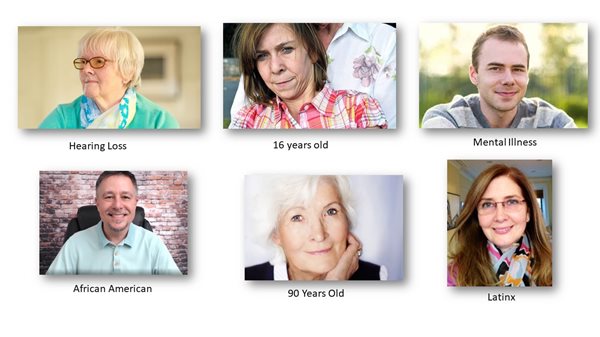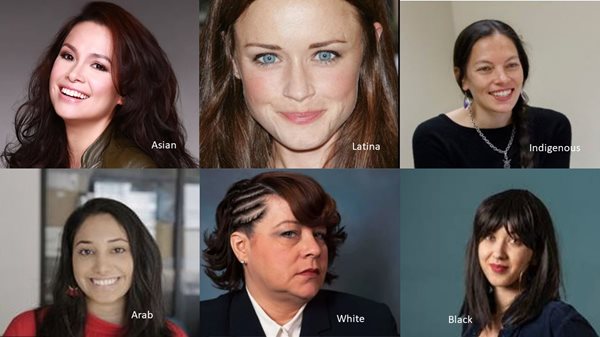Our Day 2 Plenary Speaker Birgit Smith Burton gave an inspirational talk entitled: What’s the Big IDEA? on Inclusion, Diversity, Equity, and Access. Below is a round-up of this educational talk.
IDEA – Inclusion, Diversity, Equity, and Access – is a big part of the Association of Fundraising Professionals’ mission in the USA today. AFP is laser-focused on this important work which is attributed to the pioneering efforts of many of the Association’s leaders over the years. Birgit Smith Burton is able to continue that as AFP’s first Black female global board chair. As AFP works to build the pipeline of leaders who will someday follow in the footsteps of those fundraising professionals before them, it wants to ensure these voices are diverse and reflect the populations the association serves. Birgit shared stories from her own journey and AFP’s dedicated work in the IDEA space to better understand the barriers that all fundraisers face when it comes to entry and success in the fundraising profession.
What is the Big IDEA Birgit is talking about? She said the definition of an idea is an important intention or plan and she challenged the audience to collect information, reflect and use it. She reminded people to look at what’s already happening and gave the example of when she became chair and was re-evaluating current issues. She tasked the five previous most recent chairs to reflect and share their experiences with many of the same issues re-appearing. From this exercise she reminded us to not to reinvent the wheel.
Birgit gave us a potted history of the AFP in the USA beginning as the NSFRE in 1984 and talked about how language and the terminology used over the years has changed and evolved too.
Birgit highlighted some of the work over the years – various committees and reports such as the D&I Summit and report in 2013, and the 2017 committee, highlighting how sometimes the actions and recommendations came to nothing and recognised that Equity and Access were missing from the Diversity and Inclusion space – hence the evolution of IDEA.
Birgit gave some examples of her own experience as a Woman of Colour over the years. She joined the NSFRE (as AFP then was) in 1990, joining the New York Chapter. She really felt it as a fundraiser being the sole black person but was excited to be part of this group – hoping to get the support she wanted while she was starting out in fundraising.
Fundraising is now more formalised but at the time in her late 20s, like all her contemporaries, she stumbled into it. She hadn’t planned to pivot from Musical Theatre – she’d earnt her place there under tough auditions – but was persuaded it was for her. Whilst she had a mentor in Charles Spencer (the first AFP chair of colour) and she was welcomed in the Association, it was not a diverse group and she didn’t feel supported or that it cared.
Birgit shared that she really had to reconsider whether fundraising was for her after her experience. If professionals were like that, how would donors feel about her? So she reached out to others like herself – creating her own tribe and support network.
Fast forward 33 years later and she was invited back to the Chapter a few weeks ago. Many of those in the Chapter now weren’t even born then and she was welcomed by a lovely, happy, diverse group with warmth and an apology that helped make up for her previous experiences – now they wanted to honour her prestige with pride. “Apologising is not always about something you directly did but about the harm they experienced. It’s how you bring about change. Bring those voices to the table.”
“Diversity fatigue is real”, Birgit reminded us. “It’s hard and uncomfortable. And without meaning to we judge people. We’re looking visually for what diversity looks like – we make assumptions” about age, race, background. Unconscious bias plays its part.

To demonstrate this, Birgit asked the audience to decide who was aged just 16 in the picture and pointed out that the one who was 16 looked older due to a degenerative illness that we couldn’t have known about just by looking at the picture.

Again, with race or how people identify she pointed out the visual assumptions we all make and talked about her own experience of a DNA test. She recognised that most people assume she’s African-American but she’s technically German-Bajan, with a German mother and a father from Barbados, and her DNA shows she is 56% white European. She used her own example to illustrate that “you don’t know someone’s story – we may say things we don’t realise offend. Be careful with words.”
As well as her own experience of people addressing past wrongs, Birgit shared with the room a story of a Black alumni at university where she was a consultant. They had just one person of colour, and they asked her to help them grow diversity.
On a panel this one Black Alumni was angry. He was very successful in his life and career but he’d had a bad experience at his College. A few weeks later that same College received a huge donation from him and were shocked. Birgit discovered that three white classmates had heard of his anger and had reached out to him to apologise, and they asked him to join them in donating and supporting the College now in order to support more diversity. It was because they recognised their wrongs and apologised that it changed the way forward.